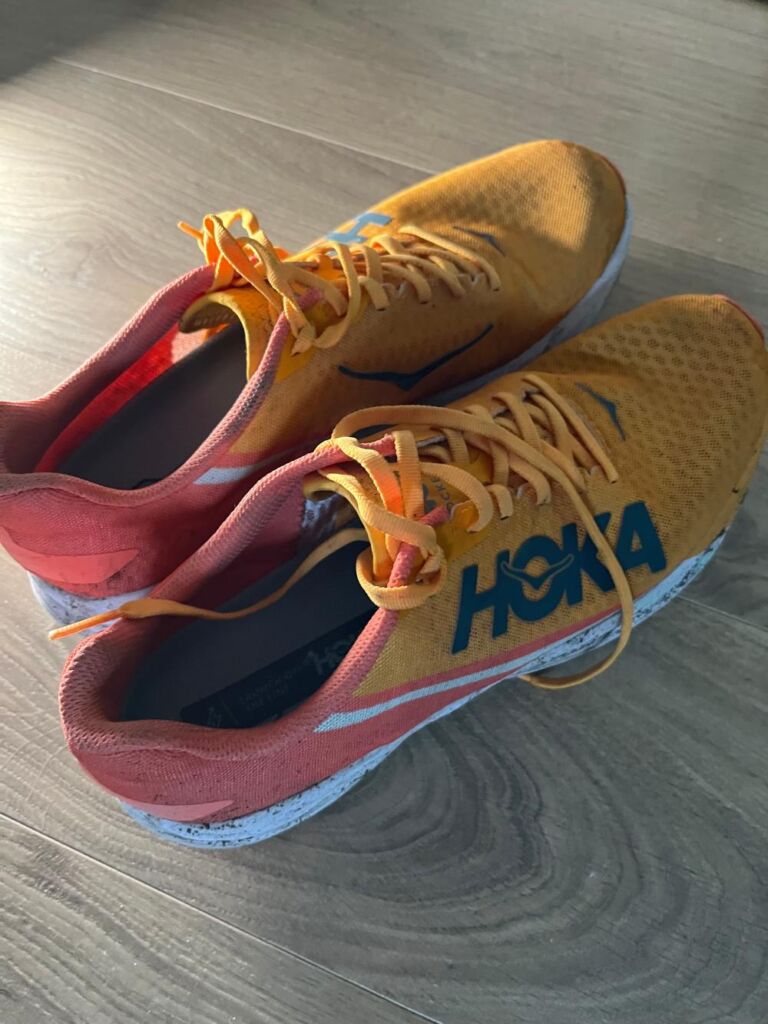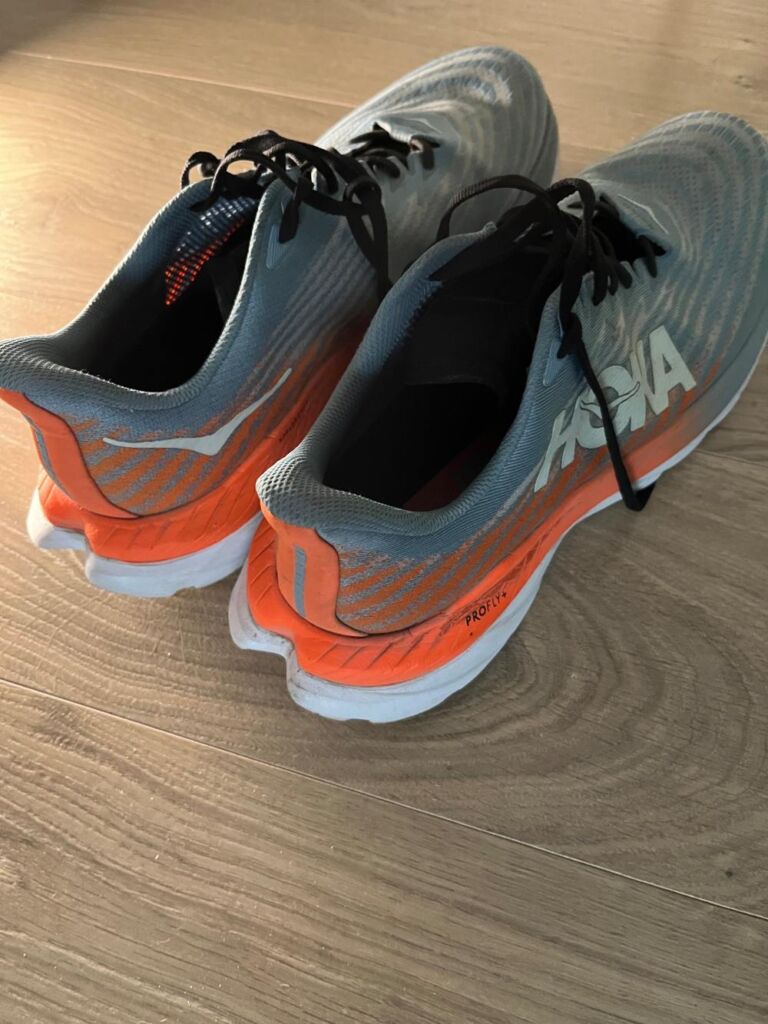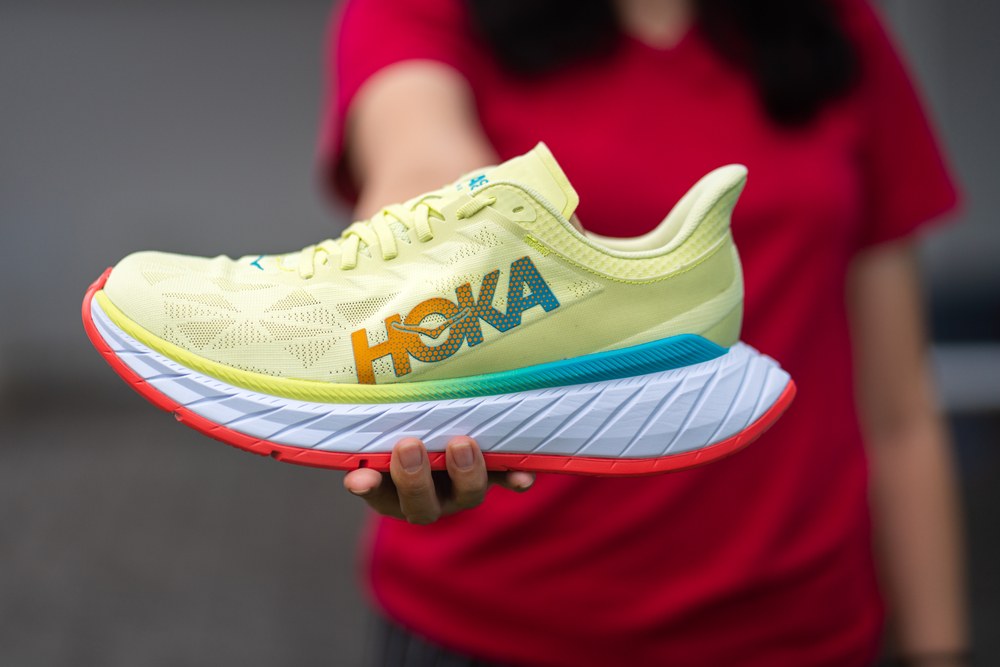Discover what’s so great about HOKA One running shoes and what makes it so great and what their potential weaknesses are.
I’ve been a HOKA ONE customer for several years now, and I’ve purchased over a dozen pairs of their different types of trainers for runners. Hoka is a relatively newer running company, founded in France in 2009 and acquired by Decker in 2013. It’s popular with athletes like Laura Galvan Rodriguez, Jan Frodeno and Adam Peterman. The company reportedly has a running shoe market share of 24.3%.
HOKA ONE runners aren’t the cheapest runners available, but they offer several key benefits for runners. In this article, I’ll explain what’s so great about HOKA ONE running shoes based on my experiences using them for a 5k, 10k, half marathon and full marathon.
Contents
1. The HOKA ONE Meta-Rocker
HOKA ONE runners contain a proprietary Meta-Rocker which helps runners gain momentum during their runs. It combines a low heel-toe drop with a rounded sole rocker.
The Meta-Rocker provides support and cushioning to the middle part of the foot and encourages a good running gait. This Meta-Rocker doesn’t exist in other trainers and is a signature of Hoka running shoes.
After buying a pair, it takes time to get used to, but many runners attest it reduces injuries from longer runs and increased weekly volume. It also helps me maintain my speed during long runs.
2. The Carbon Plate

HOKA sells several different versions of its popular running shoes containing carbon plates. This range includes the Hoka Carbon Rocket and the Hoka Rocket X. I’ve bought several iterations of these runners over the past few years. The Rocket X is the lightest, firmest, fastest Hoka shoe with a carbon plate.
After putting on a pair of trainers with a carbon plate, you’ll immediately notice the spring on your foot. The carbon plate in super shoes like Hook’s and Nike’s can shave 5 or 10 seconds off your average pace per mile. It can also help you maintain higher speeds over a longer distance.
The carbon plate in these runners is firm and tips a runner forward more than a standard pair of running shoes. It’s more difficult to walk correctly than run in these trainers.
3. Durability
HOKA specializes in manufacturing running shoes for long-distance races. Its primary target market is ultra runners and athletes. Many of its trainers are designed to last beyond the standard 300 or 400 mileage, which you can expect from other popular brands.
Having owned several pairs of HOKA trainers, I can attest that some versions like the Hoka Stinson and the Hoka Arahi, can last over 500 miles, albeit for easy sessions rather than races. That caveat being a runner’s weight and gait affects a trainer dramatically.
HOKA trainers with carbon plates are an exception. The spring and my carbon plate wore out after 300 or 400 miles, as is typical for super shoes.
4. The Lock Down
A good lockdown in a pair of trainers equates to a snug fit. It helps maintain good form while running at speed. It’s challenging for manufacturers to get right. Too tight, and your foot can swell during a long run. Too loose, and your foot will lose grip. What’s more, it’s tricky to get a balance between a good lockdown and ensuring breathability for a sweaty foot.
HOKA has the best lockdown in any pair of trainers I’ve tried. They fit nicely to your foot and also ensure breathability. I’ve found them comfortable to wear in hot and cold weather.
5. Cushioning and Performance

Runners have various needs and preferences based on their foot size, gait and preferred distances. Some runners prefer a firm trainer, whereas others look for a responsive shoe. Interestingly, several HOKA trainers manage to balance responsiveness with performance.
HOKA also sells various types of trainers ranging from firm to responsive trainers, meaning the brand offers something for many types of runners. Having tried several trainers. I can also attest that Hoka trainers are often lightweight and breathable while encouraging performance.
For example, I currently run easy and tempo workouts in the Hoka Mach 5, which is responsive and offers excellent energy return. I default to the Hoka Rocket X for interval and longer workouts due to the carbon plate, as it’s faster. I use the Clifton for recovery days as it offers support and cushioning.
6. The Hubble Heel
In the Clifton Edge and other trainers, HOKA introduced a Hubble heel. This heel supports heel strikers and those who spend time on the trails. It’s designed to reduce injury and prevent slips and falls on the trails or when running downhill.
Several years ago, I transitioned from running on my heel to running on my mid-foot, so I got less value from this type of trainer. However, I can see how this could help heel strikers avoid overuse injuries and find traction.
Why Are Hoka So Bulky?
Hoka running shoes are famous for oversized mid-soles. These soles are a vital part of its proprietary Meta-Rocker technology. This tech provides a good balance between energy return and cushioning. These trainers are designed to protect the feet of runners and ensure durability. Some Hoka trainers are bulkier than others. For example, the Hoka Arahi is a maximally cushioned trainer, while the Hoka Mach 4 is lightweight.
Why Hoka Running Shoes Are So Great? The Final Word
HOKA running shoes provide extra cushioning, which supports traction on the trails. They also are ideal for longer or more challenging runs. They offer a good balance between stability and performance and are comfortable to wear for long periods. They’re a durable trainer and often will last longer than cheaper or more budget-friendly trainers.
That said, HOKA trainers aren’t perfect. They’re more expensive than other brands. The Meta-Rocker takes time to adapt to. The Hoka Rocket X is slightly slower than the Nike Vaporfly 4%. Some runners find the more structured HOKA trainers, like the Hoka Arahi, heavy and too cushioned for their liking. That said, most runners and some walkers will find a Hoka running shoe that fits their needs… and their foot!



